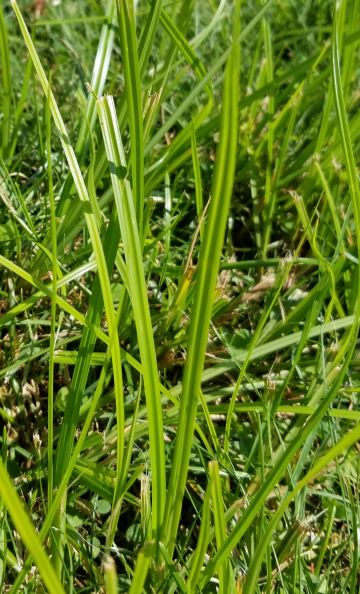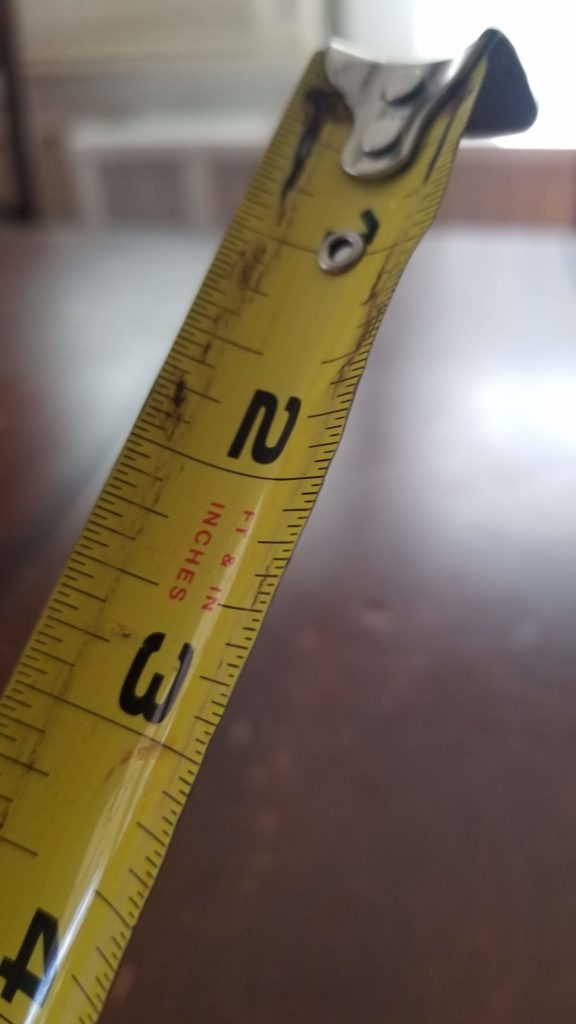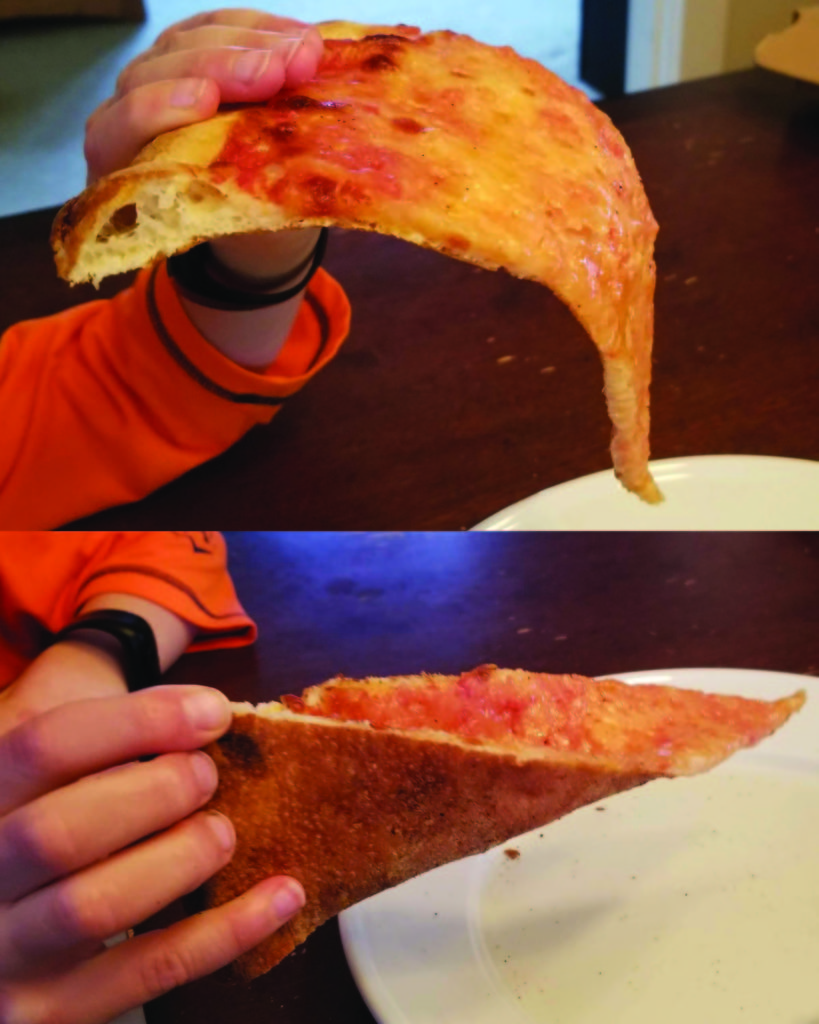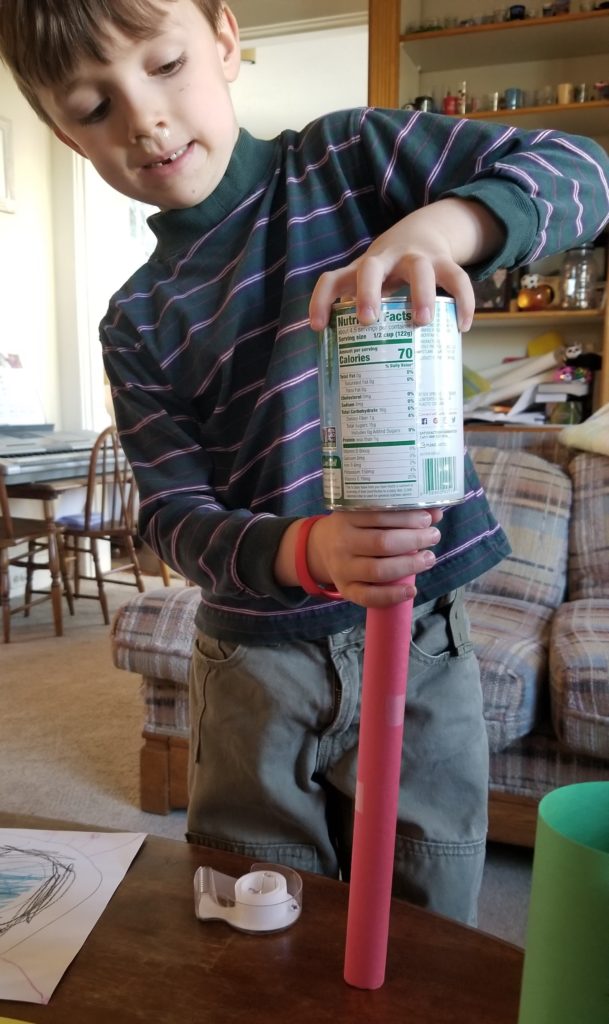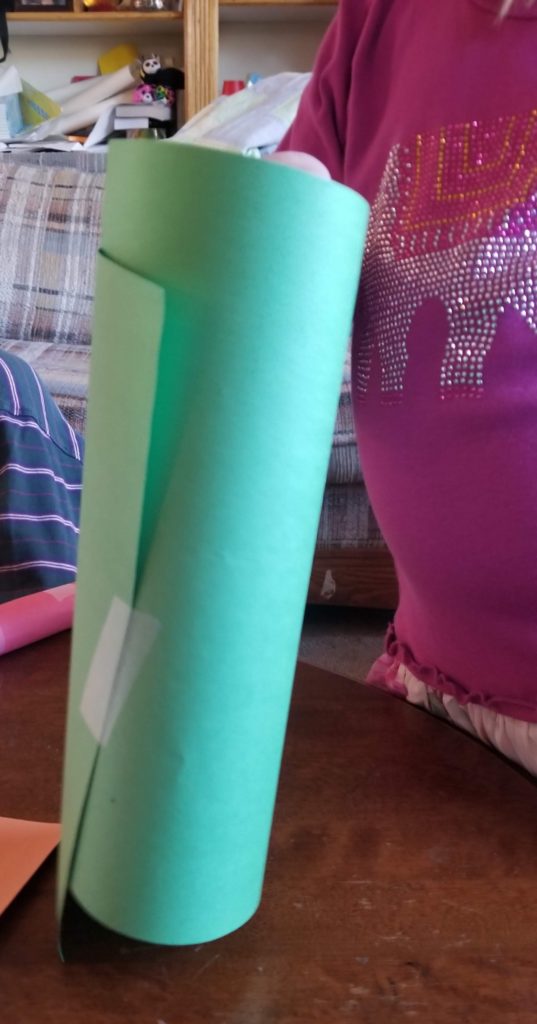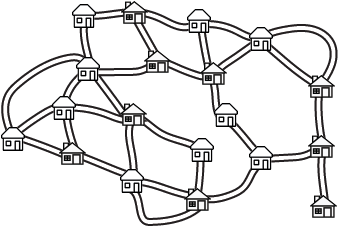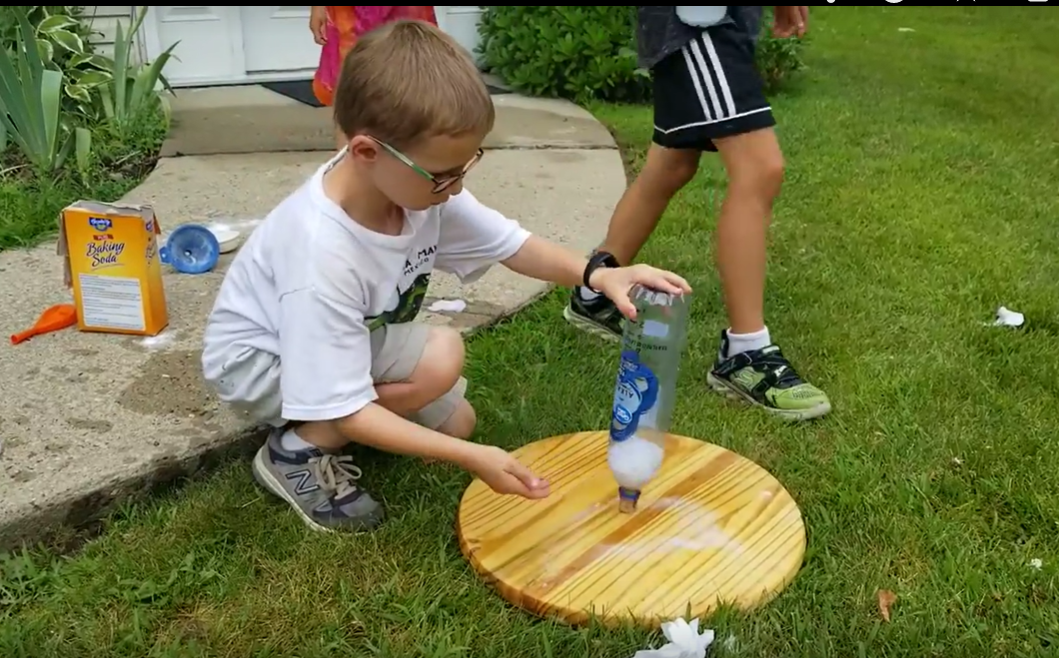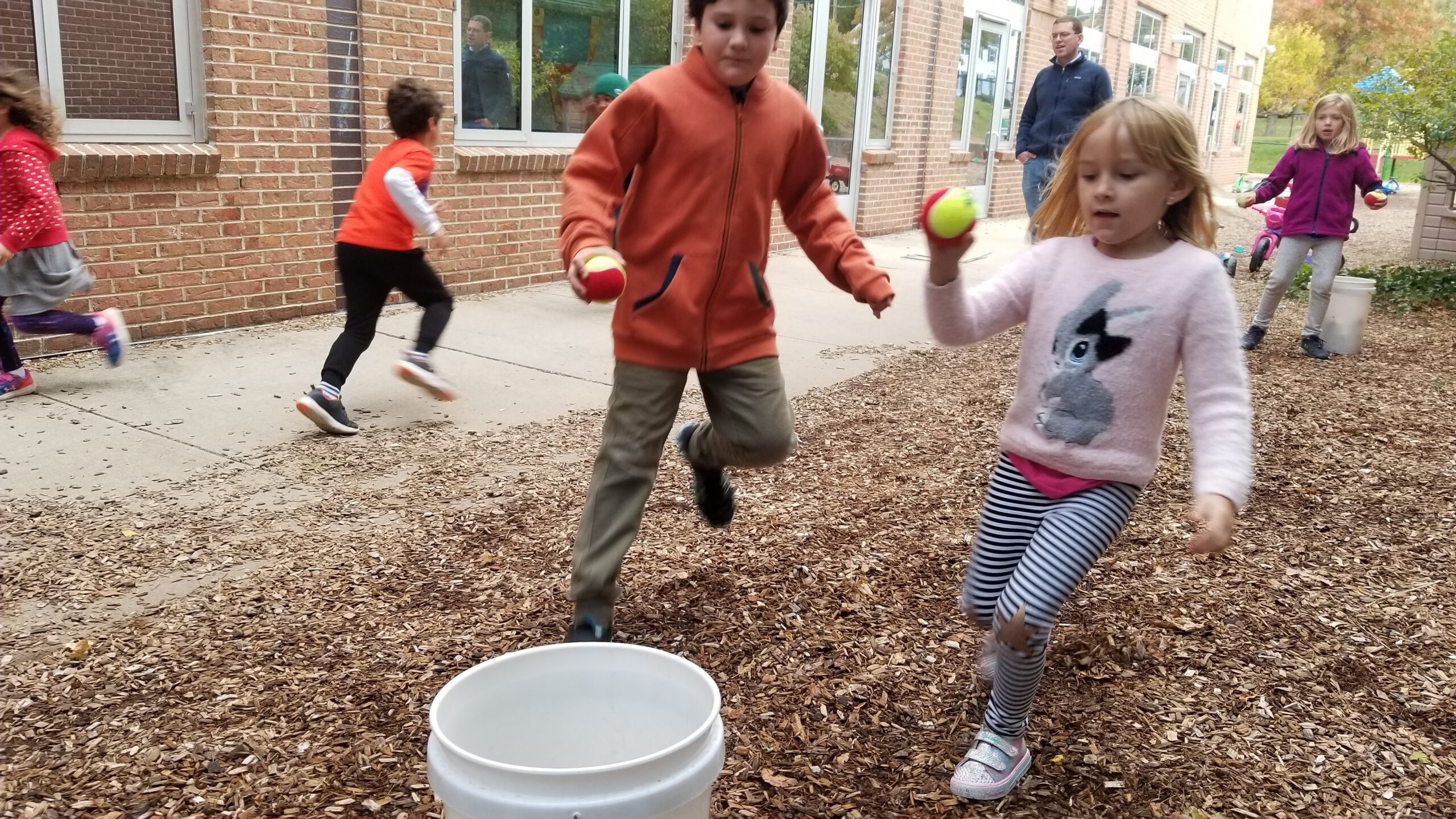Supplies for these activities:
• Paper
• A ball or other round object
• A paper towel roll or other tube
• Cardboard
• Tape
• Cans of different weight
First let’s look at a piece of cardboard. The interesting part is the end:

What do you see? Why do YOU think cardboard is made that way?
Why do those wavy lines make cardboard stronger?
Take a piece of paper and try to wrap it around a tube. Does it work?
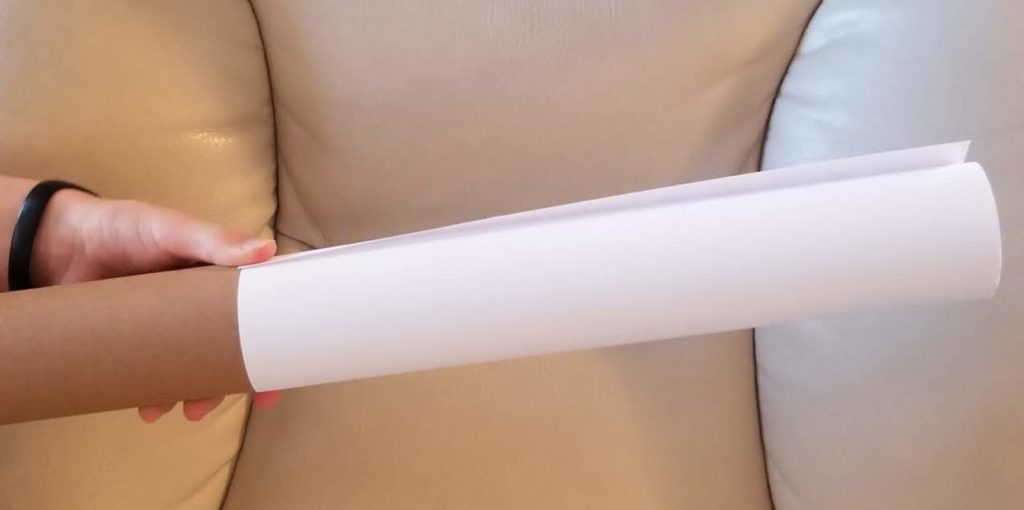
Now take the same paper, and try to wrap it around a ball. Does that work as well?
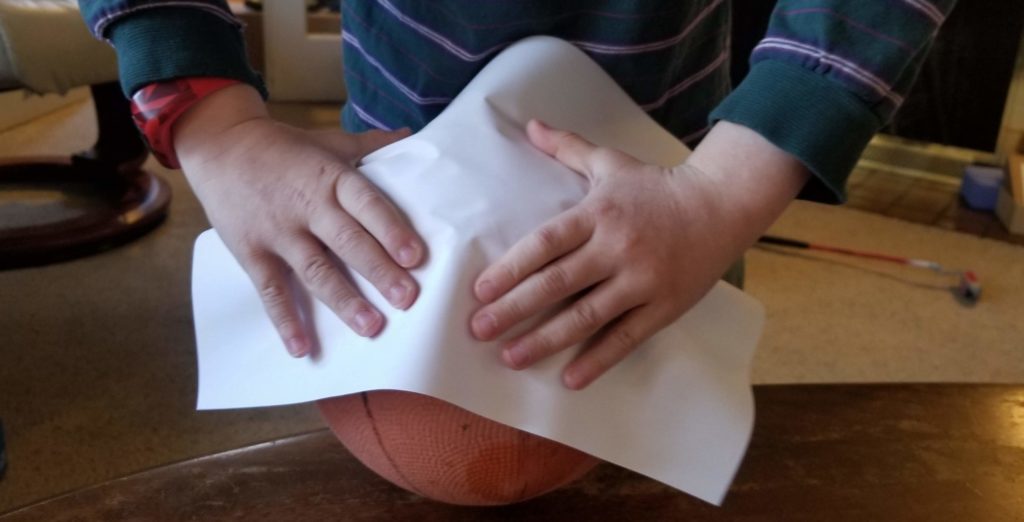
What’s the difference between a tube and a ball?
Note for adults:
Kids will often say “the ball rolls easier, or the ball rolls in all directions”. That’s another way of saying that the ball is curved in all directions – and that’s what matters!
Now take a piece of paper, and bend it in half. Is it easy or hard?
Now make a fold in the opposite direction that you bent it (in the video below, the crease runs from left to right), and keep it in a “V”. Try to bend it again. Is it easier or harder?
Pieces of paper start flat, and you can fold them one direction at a time, but when you fold it in the second direction it can only crumple, which takes more force than simply bending. So the paper with one fold is stronger.
Can you find any examples of things that have a fold in them to make them stronger?
Now let’s use the same math to help us build a strong tower!
Goal: make a tower or platform that is strong enough to hold up a can.
Materials: Just paper and tape! (And cans for testing.)
Do you think you can do it? I think you can!
First, try your own ideas. It’s okay if your tower fails – that’s how we learn!
How did you do? Could you hold up a can? How heavy? Leave a message in the comments!
Paperboard with a V fold is incredibly resistant to buckling – look how much weight it can hold:
Interested in learning more? This activity was inspired by the podcast Surprisingly Awesome, which had an episode about cardboard. This article from Wired is a great explanation of the math behind this activity. We’d be remiss if we didn’t also link to the Numberphile video on the topic.
Hope you enjoyed these activities! Leave a comment below to help us improve.

